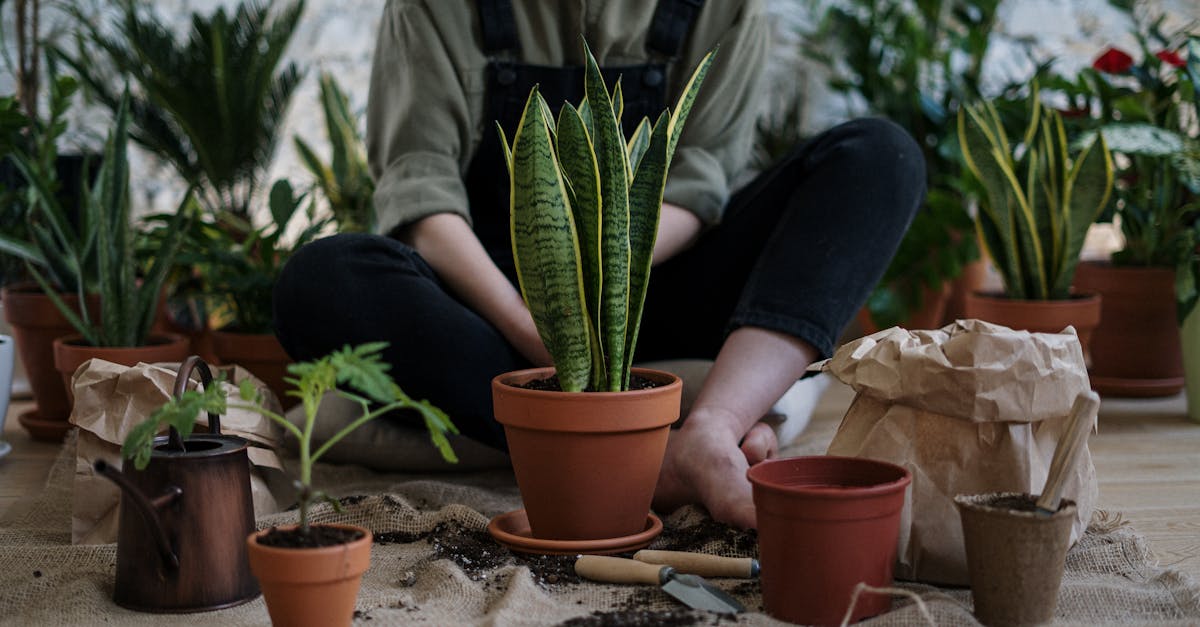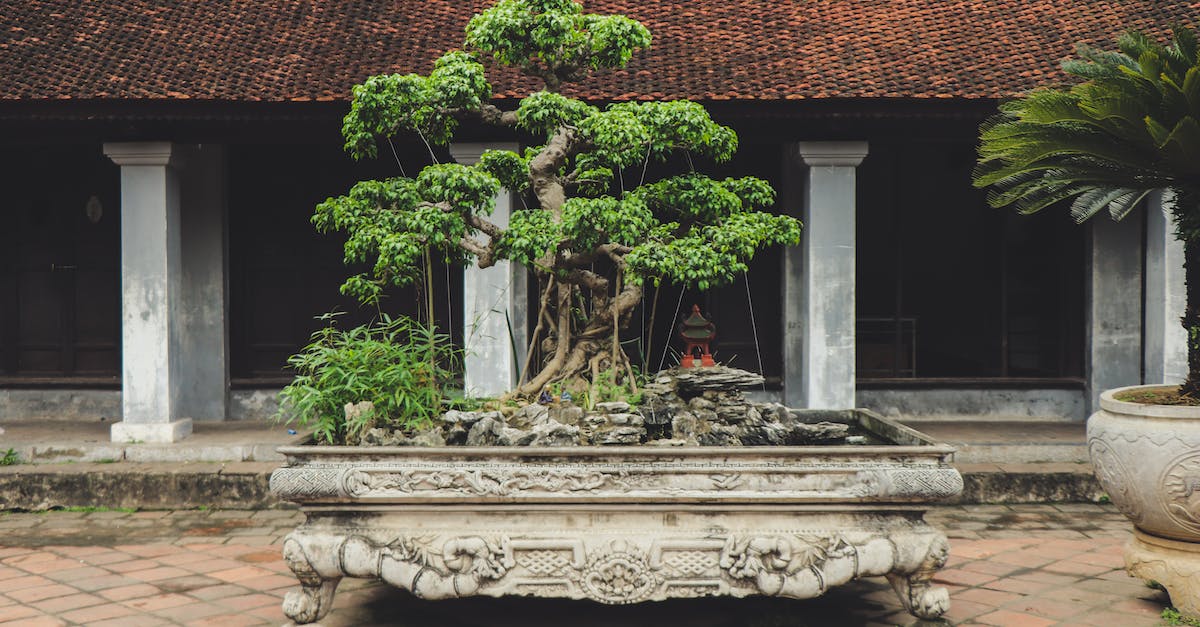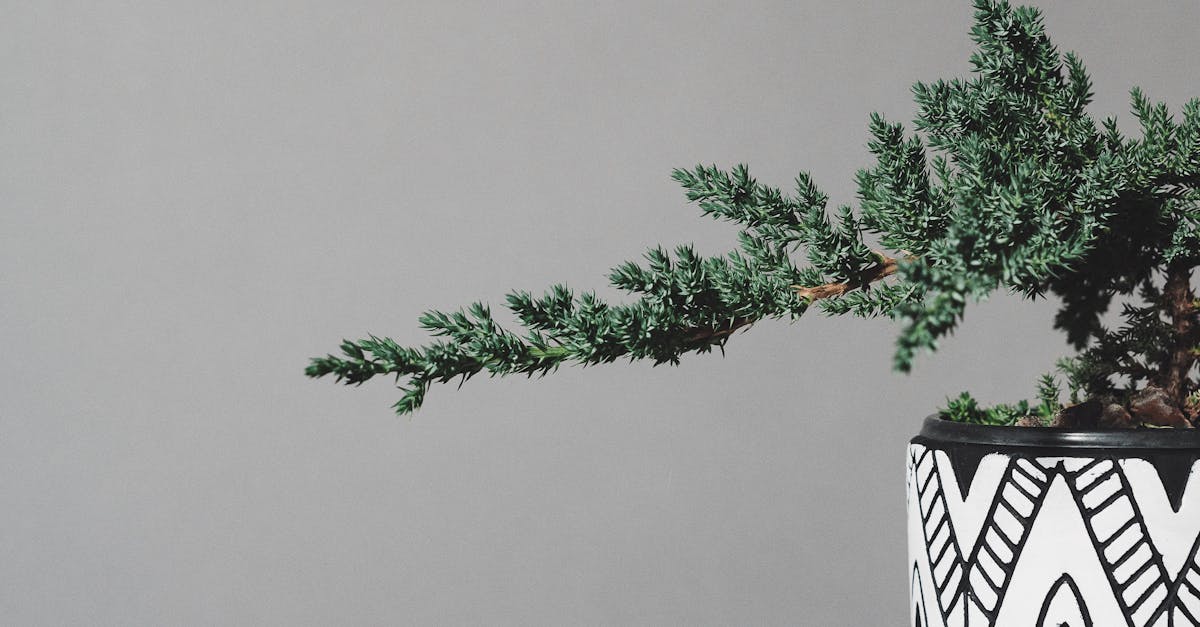Living Art: The Allure of Mini Bonsai

Immerse yourself in the enchanting world of Mini Bonsai: A Guide to Growing and Styling Tiny Trees. Discover the origins, benefits, and art of cultivating these miniature masterpieces. Learn essential techniques for growing, styling, and troubleshooting common problems, unlocking the therapeutic, aesthetic, and artistic rewards that mini bonsai offer. Embark on a journey of creativity and tranquility as you nurture these living sculptures, creating enduring beauty that will bring joy for generations to come.
1. Introduction to Mini Bonsai
Step into the captivating world of Mini Bonsai, an art form that transforms ordinary trees into exquisite living sculptures. With roots in ancient horticultural practices, mini bonsai have evolved into a refined expression of nature’s beauty, capturing the essence of towering trees in miniature form.
Beyond their aesthetic appeal, mini bonsai offer a multitude of benefits. They bring tranquility and harmony to any space, fostering a connection with nature even in urban environments. The act of cultivating mini bonsai is therapeutic, providing stress relief and promoting mindfulness. Moreover, these miniature trees can improve air quality, adding a touch of freshness to your home or office.
Choosing the right species is crucial for successful mini bonsai cultivation. Size, growth rate, and foliage characteristics should be considered to ensure the tree remains appropriately sized and aesthetically pleasing. Popular species for mini bonsai include juniper, pine, and ficus, each with unique qualities that make them suitable for this art form.
Origins and History of Mini Bonsai
The origins of mini bonsai can be traced back to ancient horticultural practices in China, where the art of cultivating dwarfed trees in pots emerged over a thousand years ago. These early bonsai were prized for their ability to mimic the grandeur of nature in miniature, offering a contemplative connection to the natural world.
Over time, mini bonsai evolved into a distinct art form in Japan, where it became intricately linked with Zen Buddhism. Buddhist monks embraced the practice of mini bonsai as a way to cultivate patience, mindfulness, and an appreciation for the beauty of imperfection. Bonsai trees were often used as meditation aids, helping practitioners to focus their minds and connect with the present moment.
Today, mini bonsai continue to be celebrated as living works of art, embodying the principles of harmony, balance, and asymmetry. They are cherished for their ability to bring a touch of nature indoors, creating a sense of tranquility and well-being in any space.
Benefits of Mini Bonsai
Mini bonsai cultivation offers a multitude of benefits, enriching the lives of enthusiasts in various ways.
Therapeutic Benefits: Caring for mini bonsai can be a therapeutic experience, providing stress relief and promoting mindfulness. The repetitive and precise tasks involved in watering, pruning, and shaping the trees encourage focus and concentration, helping to calm the mind and reduce anxiety. Additionally, the act of observing and appreciating the beauty of mini bonsai can evoke feelings of peace and tranquility.
Aesthetic Benefits: Mini bonsai are living works of art that bring the beauty of nature indoors. They add a touch of elegance and sophistication to any space, creating a focal point that captivates the eye. The intricate shapes and delicate foliage of mini bonsai evoke a sense of harmony and balance, enhancing the overall aesthetic appeal of a room.
Environmental Benefits: Mini bonsai contribute to improved air quality by absorbing carbon dioxide and releasing oxygen. They can also help regulate humidity levels, creating a more comfortable indoor environment. Moreover, mini bonsai promote a connection with nature, even in urban settings, fostering an appreciation for the natural world and its delicate balance.
Choosing the Right Species for Mini Bonsai
Selecting the right tree species is crucial for successful mini bonsai cultivation. Different species have unique characteristics that influence their suitability for this art form. Here are key factors to consider:
Size: Mini bonsai trees should remain relatively small throughout their lifetime. Species that naturally grow to a miniature size or can be effectively dwarfed through cultivation are ideal.
Growth rate: Slow-growing species are preferred for mini bonsai as they allow for greater control over their shape and size. Fast-growing species may require more frequent pruning and wiring, making it challenging to maintain their desired form.
Foliage: The size, shape, and color of the foliage play a significant role in the overall aesthetics of a mini bonsai. Species with small leaves or needles are more suitable for miniaturization, as larger leaves can overwhelm the delicate proportions of the tree.
Some popular tree species commonly used for mini bonsai include:
- Juniper: Known for its dense, evergreen foliage and ability to withstand various conditions.
- Pine: Valued for its graceful shape, long needles, and rugged bark.
- Ficus: A versatile species with diverse leaf shapes and sizes, making it suitable for various mini bonsai styles.
- Serissa: A flowering species that produces delicate pink or white blossoms, adding a touch of color to mini bonsai landscapes.
- Carmona: An evergreen species with glossy green leaves and a compact growth habit, making it ideal for small-scale mini bonsai.
When choosing a species for mini bonsai, it’s also important to consider the climate and growing conditions in your area. Selecting a species that is well-adapted to your local environment will increase its chances of thriving as a mini bonsai.
2. Growing Techniques for Mini Bonsai

Cultivating healthy mini bonsai requires mastering essential growing techniques that cater to their unique needs. Here are some key aspects to consider:
Potting: The choice of pot plays a crucial role in the health and development of mini bonsai. Shallow pots with drainage holes are ideal, as they allow for proper root growth and prevent waterlogging. The material of the pot, such as ceramic or glazed earthenware, should complement the overall aesthetic of the tree.
Watering: Mini bonsai require regular watering, but it’s essential to avoid overwatering. The frequency of watering will vary depending on factors such as the species of tree, the size of the pot, and the climate. It’s generally recommended to water when the soil surface feels slightly dry to the touch.
Fertilizing: Mini bonsai benefit from regular fertilization to provide essential nutrients for growth and vitality. Slow-release fertilizers are preferred, as they provide a gradual and balanced supply of nutrients over a longer period. Over-fertilizing should be avoided, as it can damage the roots and foliage.
Pruning: Pruning is a crucial technique for shaping and maintaining the desired form of mini bonsai. It involves selectively removing branches, leaves, and roots to control growth, promote branching, and enhance the overall aesthetics of the tree. Pruning should be done carefully and gradually, allowing the tree to recover and adjust to its new shape.
Selecting the Right Pot and Soil
Selecting the right pot and soil mix is essential for the health and well-being of mini bonsai. Here’s why:
Pot selection: The pot provides a home for the tree’s roots and plays a vital role in regulating moisture and aeration. Shallow pots with drainage holes are ideal for mini bonsai, as they prevent waterlogging and allow for proper root development. The size and shape of the pot should complement the tree’s overall aesthetics and provide enough space for future growth.
Soil mix: The soil mix for mini bonsai should be well-draining and provide adequate support for the tree’s roots. A mixture of inorganic materials, such as akadama (fired clay pellets), pumice, and lava rock, is commonly used. These materials provide good drainage, aeration, and stability for the tree. The soil mix should also be tailored to the specific needs of the tree species.
Watering and Fertilizing Mini Bonsai
Watering and fertilizing are essential aspects of mini bonsai care, ensuring the tree receives the necessary hydration and nutrients for optimal growth and health. Here’s a closer look at each:
Watering: Mini bonsai require regular watering, but the frequency will vary depending on factors such as the species of tree, the size of the pot, and the climate. Generally, mini bonsai should be watered when the soil surface feels slightly dry to the touch. Overwatering can lead to root rot and other problems, so it’s important to avoid keeping the soil constantly wet.
Fertilizing: Mini bonsai benefit from regular fertilization to provide essential nutrients for growth and vitality. Slow-release fertilizers are preferred, as they provide a gradual and balanced supply of nutrients over a longer period. Over-fertilizing should be avoided, as it can damage the roots and foliage. The frequency of fertilization will vary depending on the type of fertilizer used and the specific needs of the tree species.
Pruning and Shaping Techniques
Pruning and shaping techniques are essential for controlling the growth and form of mini bonsai, allowing you to create beautiful and aesthetically pleasing miniature trees. Here are some key techniques:
Pruning: Pruning involves selectively removing branches, leaves, and roots to shape the tree and control its growth. Different pruning techniques are used depending on the desired outcome. For example, pinching and trimming can be used to remove excess growth and encourage branching, while root pruning helps to maintain a compact root system.
Shaping: Shaping techniques involve bending and wiring the branches and trunk of the tree to create the desired form. This can be done gradually over time, using wire or other materials to guide the growth of the tree. Shaping techniques allow you to create unique and artistic forms, such as cascades, windswept trees, and literati styles.
3. Styling Techniques for Mini Bonsai
Styling techniques add an artistic dimension to mini bonsai cultivation, allowing you to create unique and captivating miniature landscapes. Here are some popular styling techniques:
Wiring: Wiring involves wrapping thin wire around the branches and trunk of the tree to guide their growth and shape them into desired positions. Wiring should be done carefully to avoid damaging the tree, and it can be used to create curves, bends, and other intricate shapes.
Bending: Bending is a technique used to shape the trunk and branches of the tree by physically bending them into the desired position. Bending can be done gradually over time, and it can be combined with wiring to achieve more complex shapes.
Root over rock: The root over rock style is a unique styling technique that involves training the roots of the tree to grow over and around a rock. This creates a dramatic and visually appealing effect, and it can be used to create the illusion of age and maturity in a young tree.
Wiring and Bending Techniques
Wiring and bending techniques are essential skills for shaping and positioning the branches and trunk of your mini bonsai according to your artistic vision. Here’s a closer look at each technique:
Wiring: Wiring involves wrapping thin wire around the branches and trunk of the tree to guide their growth and shape them into desired positions. The wire provides support and allows you to bend and shape the branches without damaging them. Wiring should be done carefully, and the wire should be removed once the branches have set in their new positions.
Bending: Bending is a technique used to shape the trunk and branches of the tree by physically bending them into the desired position. Bending can be done gradually over time, and it can be combined with wiring to achieve more complex shapes. Bending should be done carefully to avoid damaging the tree, and it’s important to use proper support to prevent the branches from snapping.
Root Over Rock Styling
Root over rock styling is a unique and visually appealing technique that mimics the natural growth patterns of trees in harsh environments, where they adapt to growing on rocks and other obstacles. Here’s a closer look at this technique:
Root over rock styling: This technique involves training the roots of the tree to grow over and around a rock, creating a dramatic and visually appealing effect. The rock provides support and stability for the tree, while the exposed roots add character and a sense of age and maturity. Root over rock styling can be achieved by carefully positioning the tree on the rock and guiding the roots over time using wire or other support materials.
Creating Landscapes and Dioramas
Creating landscapes and dioramas with mini bonsai is an art form that brings together the beauty of nature and the creativity of the artist. Here’s a closer look at this technique:
Creating landscapes and dioramas: Mini bonsai can be used to create miniature landscapes and dioramas that depict scenes from nature, such as forests, mountains, and rivers. These landscapes can be created in shallow trays or pots, and they often incorporate elements like rocks, water, and figurines to create a sense of depth and realism. Creating landscapes and dioramas with mini bonsai requires a keen eye for detail and a creative imagination.
4. Troubleshooting Common Problems

Cultivating mini bonsai can be a rewarding experience, but it’s not without its challenges. Here are some common problems that you may encounter and how to address them:
Pests and diseases: Mini bonsai, like other plants, are susceptible to pests and diseases. Common pests include aphids, scale, and mealybugs, while diseases can include fungal infections and root rot. It’s important to regularly inspect your trees for signs of pests or diseases and to treat them promptly with appropriate pesticides or fungicides.
Watering issues: Watering is a critical aspect of mini bonsai care, but it’s easy to overwater or underwater your trees. Overwatering can lead to root rot and other problems, while underwatering can cause the leaves to wilt and drop. The best way to avoid watering issues is to check the soil moisture regularly and water only when the soil feels slightly dry to the touch.
Pests and Diseases
Mini bonsai, like other plants, are susceptible to pests and diseases. Here are some common ones to watch out for and how to deal with them:
Pests: Aphids, scale, and mealybugs are common pests that can infest mini bonsai. These pests can suck the sap from the leaves and stems, causing the tree to weaken and become stunted. To prevent pests, keep your trees clean and free of debris, and regularly inspect them for signs of infestation. If you do find pests, you can treat them with insecticidal soap or neem oil.
Diseases: Fungal infections and root rot are common diseases that can affect mini bonsai. Fungal infections can cause the leaves to turn brown and drop, while root rot can damage the roots and eventually kill the tree. To prevent diseases, water your trees only when the soil is dry to the touch, and avoid overwatering. You can also use a fungicide to protect your trees from fungal infections.
Watering Issues
Watering is a critical aspect of mini bonsai care, but it’s easy to overwater or underwater your trees. Here’s how to identify and resolve common watering issues:
Overwatering: Overwatering is a common problem, especially for beginners. Mini bonsai trees have small root systems that can easily become waterlogged. Overwatering can lead to root rot and other problems, so it’s important to water your trees only when the soil is dry to the touch.
Underwatering: Underwatering is another common problem, especially during the hot summer months. Mini bonsai trees need regular watering, especially when they are actively growing. Underwatering can cause the leaves to wilt and drop, and can eventually kill the tree.
Root rot: Root rot is a serious fungal disease that can be caused by overwatering or poorly drained soil. Root rot can damage the roots and eventually kill the tree. To prevent root rot, water your trees only when the soil is dry to the touch, and make sure that the pot has drainage holes.
Pruning Mistakes
Pruning is an essential part of mini bonsai care, but it’s important to avoid common mistakes that can damage your trees. Here are some pruning mistakes to watch out for:
Pruning too much: One of the most common pruning mistakes is pruning too much. Mini bonsai trees are small, and they don’t need to be pruned heavily. Pruning too much can weaken the tree and make it more susceptible to pests and diseases.
Pruning at the wrong time: Another common pruning mistake is pruning at the wrong time. Mini bonsai trees should be pruned during the dormant season, when they are not actively growing. Pruning during the growing season can damage the tree and stunt its growth.
Pruning with the wrong tools: Using the wrong tools can also damage your mini bonsai trees. When pruning, it’s important to use sharp, clean tools. Dull or dirty tools can crush the branches and damage the tree.
Pruning without a plan: Before you start pruning, it’s important to have a plan. Decide what shape you want your tree to be, and then prune accordingly. Pruning without a plan can lead to a tree that is unbalanced or misshapen.
5. Conclusion: The Rewards of Mini Bonsai
The journey of mini bonsai cultivation is a fulfilling one, filled with rewards, challenges, and the enduring beauty of these miniature masterpieces. Here’s a reflection on the key aspects of this art form:
Rewards: Cultivating mini bonsai offers a multitude of rewards. It’s a therapeutic hobby that promotes relaxation, mindfulness, and a deep connection with nature. The process of caring for and shaping a living tree can be incredibly rewarding, and the results can be stunningly beautiful.
Challenges: While mini bonsai cultivation is rewarding, it also comes with its challenges. These trees require careful care and attention, and it can take years to achieve the desired results. Beginners may face setbacks and frustrations along the way, but with patience and dedication, they can overcome these challenges and enjoy the many benefits of mini bonsai.
Enduring beauty: One of the most striking things about mini bonsai is their enduring beauty. These trees can live for decades, and with proper care, they can be passed down from generation to generation. As they age, mini bonsai develop a unique character and charm, making them even more valuable and cherished.
The Therapeutic Benefits of Mini Bonsai
Mini bonsai cultivation offers a range of therapeutic benefits, providing a path to relaxation, mindfulness, and increased well-being. Here’s a closer look at these benefits:
Stress reduction: The act of caring for mini bonsai can be a meditative and stress-reducing activity. The repetitive tasks of watering, pruning, and shaping the trees require focus and concentration, which can help to calm the mind and reduce feelings of stress and anxiety.
Mindfulness: Mini bonsai cultivation promotes mindfulness by encouraging practitioners to focus on the present moment. When caring for their trees, enthusiasts must pay close attention to the needs of the plant and respond accordingly. This process can help to cultivate a sense of awareness and appreciation for the beauty and fragility of nature.
Increased well-being: Studies have shown that interacting with plants can have a positive impact on overall well-being. Mini bonsai, with their精致 beauty and calming presence, can contribute to a more positive and fulfilling life.
The Artistic Expression of Mini Bonsai
Mini bonsai cultivation transcends mere horticulture, offering a unique form of artistic expression. Here’s how mini bonsai empowers you to create living sculptures that reflect your creativity and style:
Artistic expression: Mini bonsai is an art form that allows you to express your creativity and personal style. Through the careful selection of tree species, shaping techniques, and pot choice, you can create miniature landscapes that are both visually appealing and deeply personal.
Living sculptures: Unlike traditional sculptures, mini bonsai are living, evolving works of art. They require ongoing care and attention, and they will change and develop over time. This dynamic nature adds a unique dimension to the artistic experience, as you witness the transformation of your creation.
Reflection of your style: The style of your mini bonsai can be a reflection of your own personality and aesthetic preferences. Whether you prefer the traditional Japanese style, the more naturalistic literati style, or something in between, there is a style of mini bonsai that will suit your taste.
The Enduring Beauty of Mini Bonsai
The beauty of mini bonsai extends beyond their initial creation, as they possess an enduring quality that can bring joy and tranquility for generations to come. Here’s why mini bonsai are considered timeless treasures:
Enduring beauty: Mini bonsai are living works of art that can live for decades, even centuries, with proper care. As they age, they develop a unique character and charm, becoming even more valuable and cherished. Their enduring beauty allows them to be passed down through generations, becoming a cherished family heirloom.
Connection to nature: Mini bonsai offer a tangible connection to nature, even in urban environments. Their presence in a home or office can create a sense of peace and tranquility, reminding us of the beauty and fragility of the natural world.
Timeless appeal: The appeal of mini bonsai transcends cultural and temporal boundaries. Their精致 beauty and calming presence have captivated people for centuries, and they continue to be appreciated by enthusiasts around the world. Whether displayed in traditional Japanese tokonoma alcoves or modern living rooms, mini bonsai bring a touch of timeless elegance to any space.
What is the best type of tree to use for mini bonsai?
There are many different tree species that can be used for mini bonsai, but some of the most popular include juniper, pine, ficus, and maple. These trees are relatively easy to care for and can be trained to take on a variety of shapes.
How often should I water my mini bonsai?
The frequency of watering will vary depending on the type of tree, the size of the pot, and the climate. Generally speaking, mini bonsai should be watered when the soil surface feels slightly dry to the touch.
How can I shape my mini bonsai?
There are a variety of techniques that can be used to shape mini bonsai, including wiring, bending, and pruning. Wiring involves wrapping thin wire around the branches and trunk of the tree to guide their growth. Bending involves physically bending the branches and trunk to create desired shapes. Pruning involves selectively removing branches and leaves to shape the tree and control its growth.






